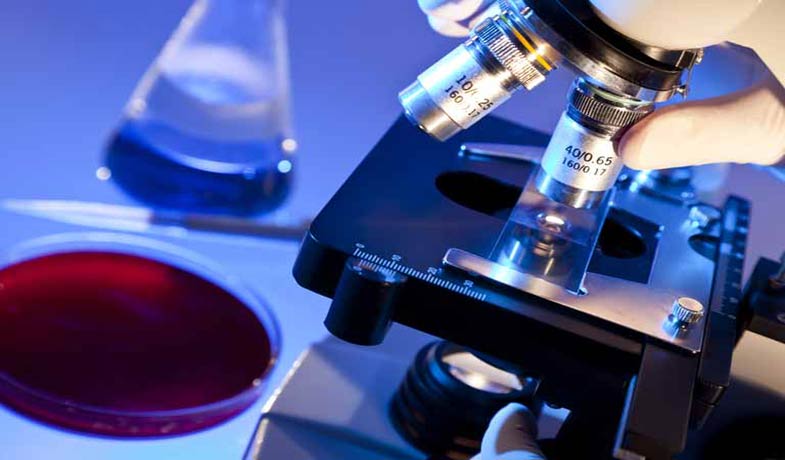Since cells have a limited lifespan, they must be constantly renewed. The site of blood formation is the bone marrow, which is distributed in the cavities of the bones. In the bone marrow, all forms of blood cells are constantly formed in large numbers from some precursor cells or stem cells through cell division and maturation steps. When they are ripe, they enter the bloodstream.
In leukemia, genetic modification of stem cells disrupts the normal maturation process of immature white blood cells that also enter the bloodstream and multiply uncontrollably; Malignant cells become dysfunctional and displace healthy cells in the bone marrow. There are, for example. B. Symptoms such as infections, fatigue, anemia and bleeding tendency.
Forms of leukemia
A basic distinction is made between acute and chronic forms of leukemia. In acute forms of leukemia, the disease progresses very quickly, so that without treatment, a potentially fatal condition can occur within a few weeks. In chronic forms of leukemia, the condition can remain stable for months or years, so that, depending on when it was diagnosed, it may take a little longer to start treatment. Furthermore, leukemias are differentiated between lymphatic and myeloid leukemia based on the origin of blood cells that have enlarged due to defects.
This results in the following forms of leukemia, which differ in terms of symptoms, course, prognosis and treatment:
Acute myeloid leukemia (AML)
A sign of acute myeloid leukemia is the frequency of occurrence of myeloblasts or monoblasts. AML occurs worldwide at a rate of 2.5 cases per 100,000 population per year. It is the most common type of leukemia in adults.
Acute lymphocytic leukemia (ALL)
Acute lymphatic leukemias occur mainly in children (between 2 and 10 years of age), less commonly in adults, mainly between 30 and 50 years of age. Approximately one in every 100,000 people per year is affected by ALL. In ALL, the meninges can be affected. For this reason, a lumbar puncture is performed as a precaution and intrathecal therapy is used. If the meninges are affected, head irradiation is administered.
Chronic myeloid leukemia (CML)
Chronic myeloid leukemia is characterized by a significant increase in granulocytes and their precursors in the bone marrow, blood, spleen and life. It occurs at a rate of 10 cases per year per 1 million inhabitants. Middle-aged to elderly people are most affected.
Chronic lymphocytic leukemia (CLL)
CLL is a form of leukemia in which mature lymphocytes are affected. The number of leukocytes in the bone marrow, blood, lymphoid tissue and other organs increases significantly; the proportion of lymphocytes they contain can reach 95%. There are two types of lymphocytes in the blood: B cells and T cells. Elderly people aged 50 and over are most affected. Cancerous B cells are present in approximately all cases of CLL. So-called B-CLL is the most common form of leukemia in adults, affecting around 60,000 people in Europe every year. A cure is only possible through an allogeneic bone marrow transplant.
Other forms of leukemia
Other forms of leukemia include: For example, mixed lineage leukemia (MLL), which was only discovered in 2001, is a variant of ALL. MLL has a chromosomal translocation. This displacement of part of a chromosome means that part of chromosome 11 has separated and attached itself to another chromosome. Patients with this chromosomal translocation present gene expression profiles that differ significantly from other forms of leukemia.
Leukemia treatment methods
In the 1960s, several antileukemic drugs were developed, which paved the way for chemotherapy, commonly used today. The goal of chemotherapy is to completely destroy the leukemia cells or push them away as much as possible. The drugs particularly attack cells during cell division. This mainly damages tumor cells, which multiply almost constantly. Chemotherapy can achieve a reduction in the number of leukemic cells (partial remission) and, in some cases, even extensive regression of the disease (complete remission).
Bone marrow transplantation was developed in the 1970s and is still used as a very effective therapy today. After high-dose therapy that destroys existing bone marrow, the patient’s bone marrow is transferred from a suitable donor. The donor’s stem cells then begin to produce new, functional blood cells. What is crucial here is tissue compatibility between donor and recipient, as incompatibilities can lead to an immunological defense reaction of the new immune system against the recipient’s organism.
Currently, several drugs are being used in humans that specifically intervene to control cancer cells in some forms of leukemia and inhibit pathological cell proliferation. Even in advanced stages of the disease there have been very promising results.





